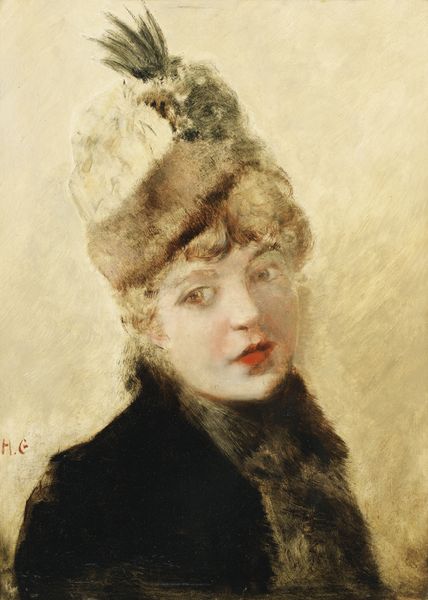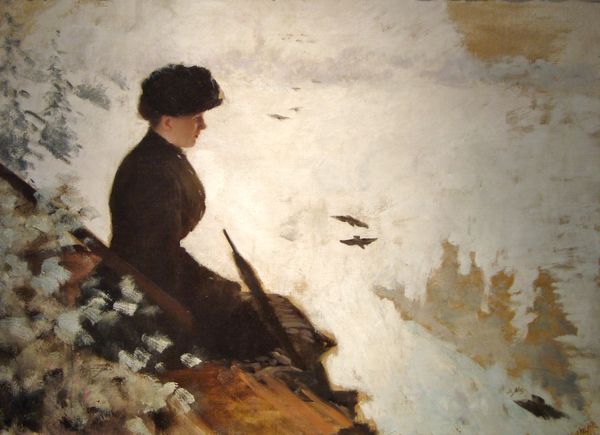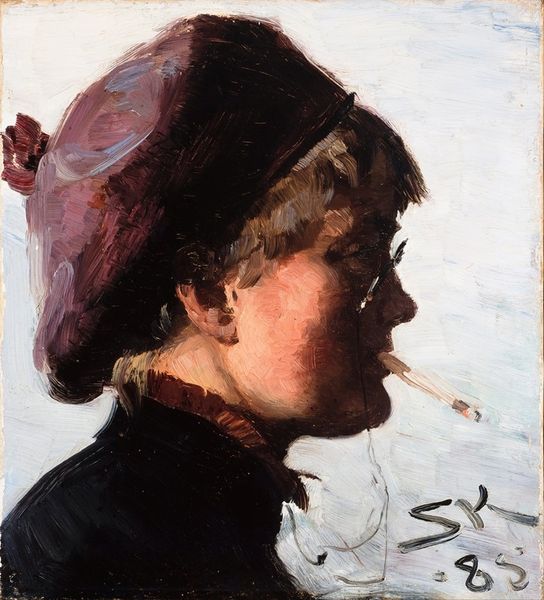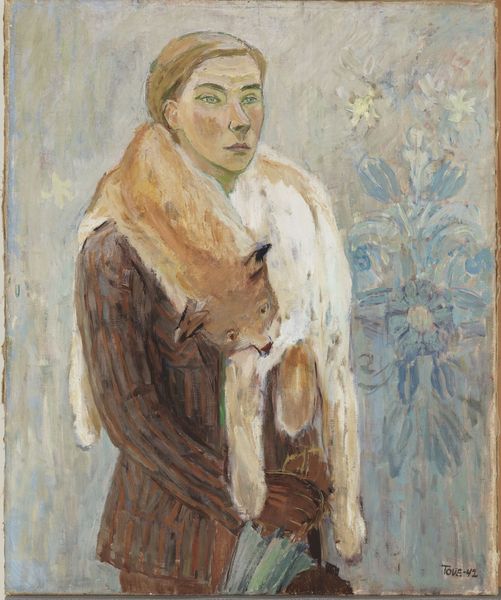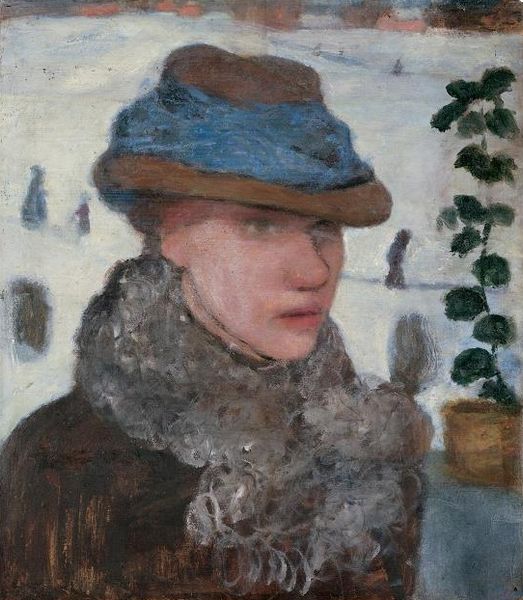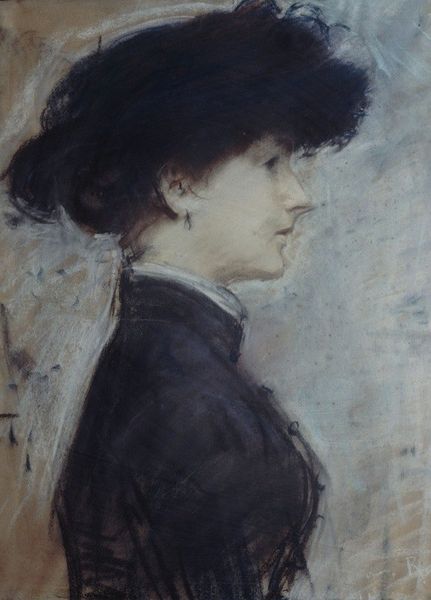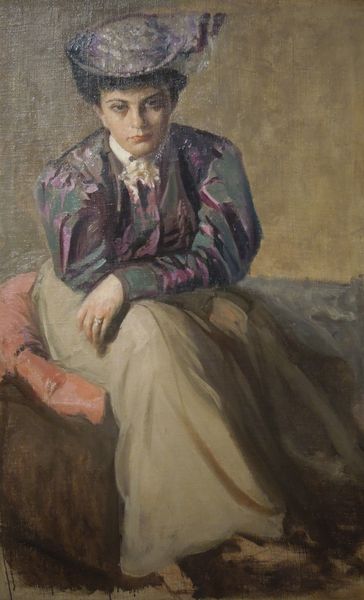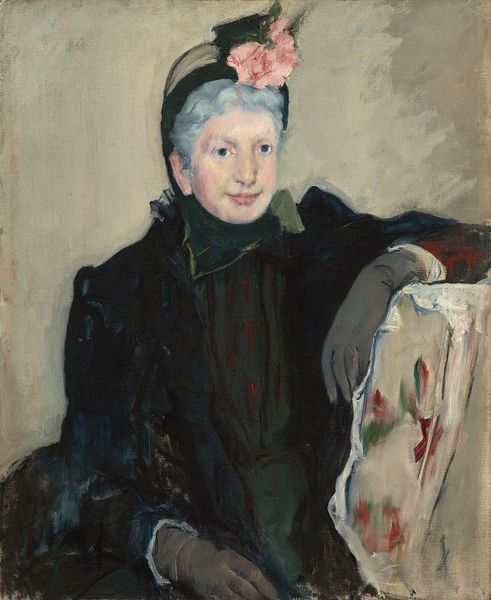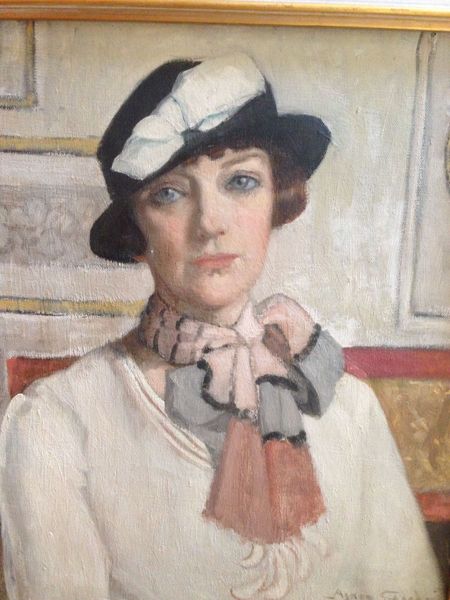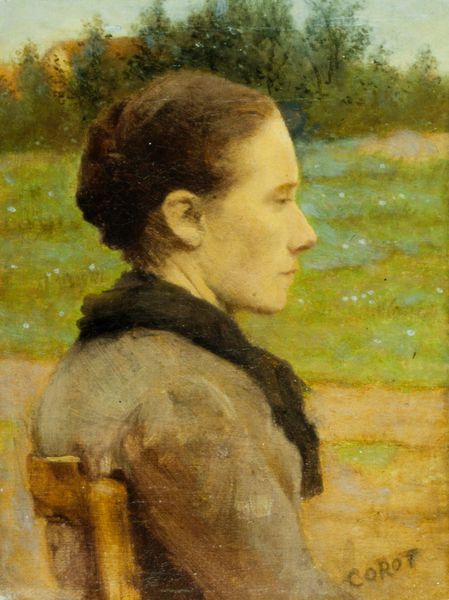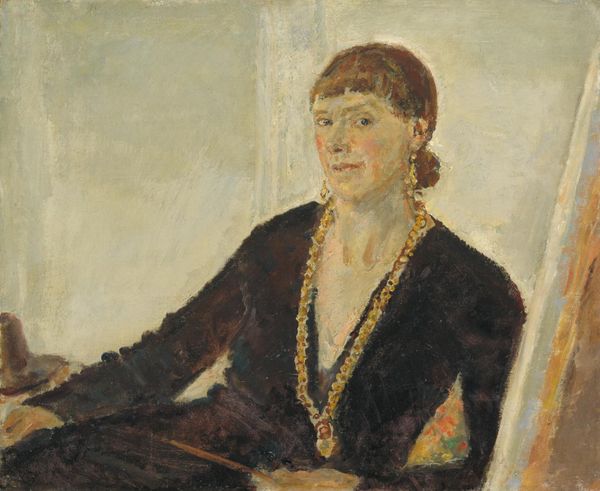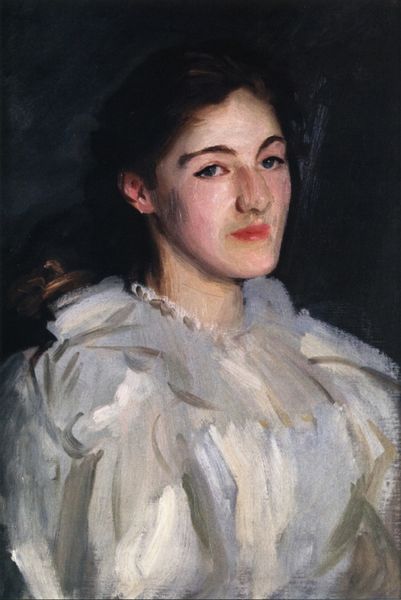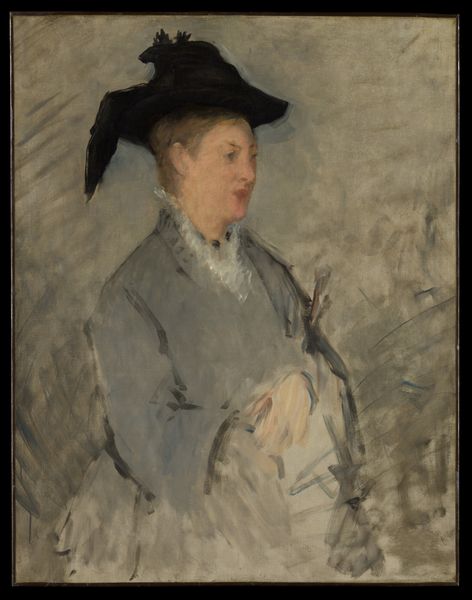
painting, plein-air, oil-paint
#
portrait
#
painting
#
impressionism
#
plein-air
#
oil-paint
#
landscape
#
genre-painting
Copyright: Public domain
Editor: This is “Presso al lago,” or "By the Lake," painted in 1879 by Giuseppe de Nittis. It’s an oil painting, and what strikes me most is its quiet, almost melancholic mood, achieved with a restrained palette and seemingly simple composition. What do you see in this piece? Curator: I see a study in the subtle power of observation and its link to class identity in 19th century society. De Nittis, associated with the Italian Impressionists, presents a portrait of a woman – possibly his wife – positioned against a seemingly placid, natural backdrop. But it's important to consider how this 'natural' space operates as a constructed landscape accessible mostly to the privileged. The woman's gaze, averted and perhaps contemplative, invites us to consider her role in this tableau. Editor: Her clothing definitely indicates a certain level of affluence, with the fur and elaborate hat. But the painting doesn't feel celebratory; there's almost a disconnect. Curator: Precisely. I think de Nittis is subtly engaging with the representation of women within the Impressionist movement, which often depicted them in leisure but didn't necessarily delve into their inner lives or question the social structures that confined them. We must ask, is she truly at leisure, or performing leisure? Is she being consumed by the world of men? Editor: That’s a perspective I hadn’t considered. The scene seemed so straightforward to me at first glance. Curator: It's easy to see these works simply as beautiful depictions of nature or fashionable women. But by looking at the painting through the lenses of gender, class, and access to landscape, we start to unpack its deeper complexities. What’s your view now? Editor: Now I appreciate how De Nittis prompts us to question the scene presented and how societal expectations might shape both the woman's experience and our perception of her. Curator: Yes! Thinking critically helps make new meanings that give these old paintings greater cultural importance.
Comments
No comments
Be the first to comment and join the conversation on the ultimate creative platform.
